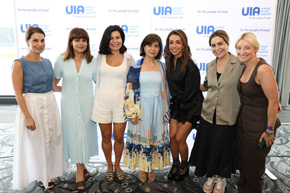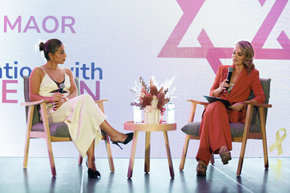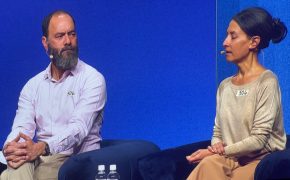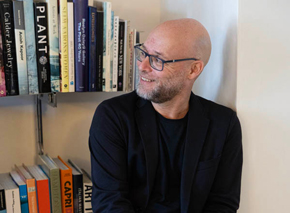The Art of Exile
New worlds for Young Adults to conquer. Book review by Dr Anne Sarzin
 Competing values—right and wrong, good and evil, peace and war, kindness and cruelty, truth and lies—are the stuff of conversations, communication, contact and conflict between the teenager protagonists of The Art of Exile, a novel for Young Adults,
Competing values—right and wrong, good and evil, peace and war, kindness and cruelty, truth and lies—are the stuff of conversations, communication, contact and conflict between the teenager protagonists of The Art of Exile, a novel for Young Adults,
The American author Andrea Max has crafted an imaginative and extremely thoughtful story that veers between the realities of ‘provincial’ life in New York and a remote fantasy realm to which Renaissance masters were once exiled and where their descendants have amassed an enviable record of achievements that could revolutionise life on earth as we know it. Their pre-eminent Genesis Institute is an academic powerhouse where unparalleled research results in breakthrough scientific and artistic advances.
The protagonist and breathless narrator of the novel, young New Yorker Ada Castle, belongs to a powerful circle of families of noble Spanish descent, who guard their own secrets and whose rigid code of governance controls the families’ actions and destinies. They task Ada with spying and stealing the secrets of the Genesis Institute in the otherworldly fantasy realm, which unleashes challenging events and unexpected plot twists and turns.
Ada, however, is not the families’ ideal candidate for this mission, as she is far from their desirable prototype of an unquestioning agent. With her independent disposition and analytical mind, she interrogates not only her own family’s traditions, inherited structure and code of conduct, but also the values, aims and actions of the practitioners of ancient and modern crafts at the Genesis Institute. As an idealist, she is critical of what she perceives as their selfish hoarding of phenomenally progressive discoveries made by their experts in five Genesis Guilds that have a medieval history and a modern resonance: Sophists, Artisans, Alchemists, Ciphers and Bioscience. Ada knows that this knowledge, if shared, could alleviate suffering, cure diseases and change so many lives for the better. She yearns to find an answer to human mortality, so as to preserve her grandfather’s life whom she adores.
There is a strong Jewish theme to this young adult novel about prophets and scholars and sages, with their emphasis on education as a key to progress. Ada’s father is Jewish and, in significant ways, Jewish mythology influences and defines her consciousness. She is clearly moved by the Judaic commitment to repairing a broken world. There are kabbalistic references throughout the novel, such as the healing power of a substance known as Ha’I that linguistically and energetically resembles the biblical component ‘chai’, which equates with ‘Life’. These Judaic references, including a mystical composition called ‘Josef Halevi’s nocturne’ and multiple references to the historicity of the blood libel perpetrated against Jews, are woven throughout the novel, adding a surprising degree of intellectual depth and spiritual meaning.
As Ada enters into the life around her and begins to understand the inner workings of the Genesis Institute, she confronts different values that challenge her preconceived ideas and especially her ingrained loyalties to her own cherished and beloved family she left behind, and their wider circle to whom she owes respect and obedience. Ada scrutinises the known and fearlessly investigates and explores the unknown. In the new realm to which she travels, she has access to knowledge and tuition that improve and perfect her practical and inherent mystical skills. She succeeds beyond her wildest dreams in harnessing and honing her abilities to accomplish feats of unimaginable mental and physical strength.
Not all the action focuses on elevated themes. At its core, this is also the story of an adolescent girl rather precariously poised on the cusp between girlhood and womanhood, And there are enough magnetically-charged young men—especially Michael and Raphael who are not quite as angelic as their names might suggest—who mesmerise, fascinate and, at times knowingly and unknowingly, ensnare her in potentially seductive situations. As Ada states poetically, ‘My heart stutters and I hold my breath’. It is all rather exciting and I got caught up in the tensions and thrills of these young-love dramas and bewitched by the undeniably attractive and romantic candidates who dazzle Ada and the reader.
Author Andrea Max is a gifted writer, contrasting the authentic colloquial expressions of teenagers with the more elevated tone of philosophical discourse, both skillfully blended together. But it is in the creation of the independently-minded Ada and the host of captivating characters that flit so colourfully through this book that the author triumphs. They are a cast of living and breathing entities, both human and ethereal, with their individual brilliance and flaws, who capture our attention and imagination. Ultimately, this is a story about two different civilisations, where conflict could ignite destruction and death. Will Ada’s compassion and her sense of justice secure a fairer, more positive and peaceful outcome? The pace of events unfolding in multiple ways keeps the reader guessing and enthralled.
The Art of Exile (ages 14 up)
Andrea Max
Margaret K. McElderry Books
Simon & Schuster Children’s Publishing
May 2025







